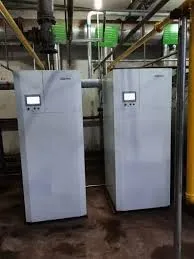نومبر . 05, 2024 12:17 Back to list
cast iron alloy
Understanding Cast Iron Alloys Properties and Applications
Cast iron, a group of iron-carbon alloys with a carbon content greater than 2%, is renowned for its remarkable casting abilities and versatility. Among its various forms, cast iron alloys have carved a niche in numerous industrial applications due to their unique properties.
One of the most significant aspects of cast iron alloys is their excellent fluidity during casting, allowing them to fill complex molds effectively. This property is primarily attributed to the low melting point of cast iron, which ranges from 1200°C to 1300°C (2192°F to 2372°F). This characteristic makes cast iron alloys favorable for producing intricate shapes with fine details, often required in machinery parts, engine blocks, and cookware.
In terms of mechanical properties, cast iron alloys are known for their high wear resistance and durability. The presence of carbon in the alloy, often in the form of graphite flakes or nodules, contributes to its strength and hardness. Gray cast iron, for instance, is characterized by its graphite structure, which enhances its machinability and damping capacity. This makes it particularly suitable for applications in heavy machinery and automotive components.
Another notable type is ductile iron, also known as nodular cast iron. This alloy introduces small amounts of alloying elements like magnesium, which alters the graphite formation from flakes to nodules. As a result, ductile iron exhibits improved tensile strength, ductility, and toughness, making it an ideal choice for high-stress applications such as pipelines, heavy-duty gears, and structural components.
cast iron alloy

Cast iron alloys also offer excellent casting characteristics that allow for significant savings in terms of machining and finishing processes. The ability to cast intricate parts directly results in reduced production costs and shorter lead times. Additionally, cast iron's inherent resistance to deformation at elevated temperatures makes it a preferred material for components exposed to harsh thermal environments.
Moreover, environmental considerations are increasingly shaping the development and production of cast iron alloys. Efforts to recycle and reclaim cast iron scrap contribute to a more sustainable manufacturing process. The industry has witnessed advancements in alloy compositions that enhance performance while minimizing environmental impact.
The versatility of cast iron alloys extends to various industries, including automotive, construction, and manufacturing. They are widely used in engine blocks, crankshafts, pipes, and machinery bases. Furthermore, the aesthetic qualities of certain cast iron products, such as decorative garden furniture and cookware, highlight the material's appeal beyond functional applications.
In summary, cast iron alloys represent a remarkable category of materials defined by their durability, excellent casting properties, and versatility across numerous applications. As technology advances, ongoing research continues to unlock new potentials and improve the efficiency and sustainability of these alloys, ensuring their relevance in modern manufacturing processes. Whether utilized in industrial settings or everyday products, cast iron alloys are an essential component of various engineering solutions, embodying both tradition and innovation.
-
Centrifugally Cast Iron Water Main Pipe | Ductile Iron Solutions
NewsAug.24,2025
-
Durable Cast Steel Concrete Pipe Mold Bottom Rings & Base Trays
NewsAug.23,2025
-
Centrifugally Cast Iron Water Main Pipe for Reliable Mains
NewsAug.22,2025
-
Durable Centrifugally Cast Iron Water Main Pipe
NewsAug.11,2025
-
Centrifugally Cast Iron Water Main Pipes for Reliability
NewsAug.10,2025
-
High-Quality Centrifugally Cast Iron Water Main Pipes
NewsAug.09,2025


